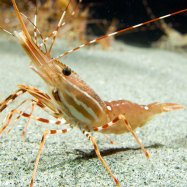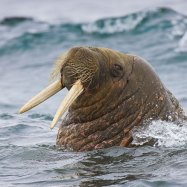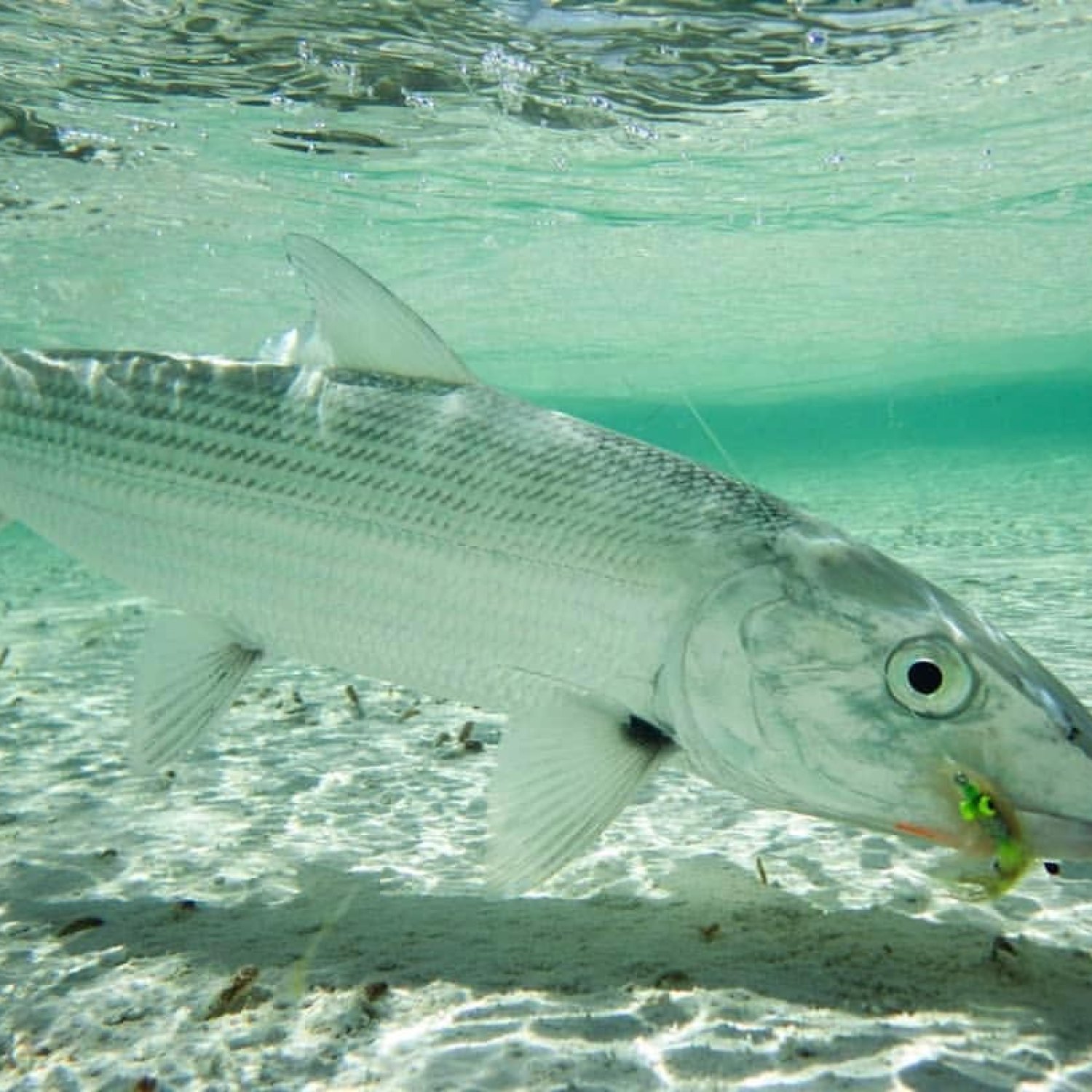
Bonefish
17 to 36 inches (43 to 91 cm)
Meet the bonefish, a slender and elongated fish that can grow up to 36 inches long! Found in the Atlantic, Pacific, and Indian Oceans, this member of the Albulidae family is known for its powerful swimming abilities and impressive jumping skills. Its bony mouth is perfect for feeding on shrimp and other small creatures. Keep an eye out for this fast and agile fish on your next ocean adventure! #Bonefish #Albulidae #MarineLife
Animal Details Summary:
Common Name: Bonefish
Kingdom: Animalia
Habitat: Saltwater, nearshore habitats
The Mysterious Bonefish: A Jewel of the Sea
The ocean is home to countless species of remarkable creatures, each with their own unique features and abilities. Among these captivating creatures is the bonefish, a symbol of grace and agility in the world of fish. Known for its elusive nature and remarkable prowess in the water, the bonefish has captured the hearts of many. From its scientific name, Albula vulpes, to its physical characteristics and behaviors, the bonefish is truly a jewel of the sea Bonefish.A Brief Introduction to the Bonefish
The bonefish, also known as Albula vulpes, is a member of the Actinopterygii class, which includes a wide variety of ray-finned fish. It is commonly found in the Albuliformes order, a group of fish that share a similar body shape and habitat. Its scientific name, Albula vulpes, is derived from the Latin words "albula" meaning white or bright, and "vulpes" meaning fox. These names reflect the bonefish's beautiful silvery-gray coloration and fox-like agility in the water.Bonefish are primarily carnivorous, which means they feed on other animals to survive. They are often found in nearshore habitats, such as mangrove-lined lagoons, seagrass beds, and coral reefs. These habitats provide ideal conditions for bonefish to thrive, with plenty of food sources and shelter from predators.
Geographical Distribution and Country of Origin
Bonefish can be found in tropical and subtropical waters worldwide, making them one of the most widely distributed fish species in the world. They are found in the Atlantic, Pacific, and Indian Oceans, as well as the Caribbean Sea Bass. Some of the countries where bonefish are native include the United States, Mexico, Cuba, the Bahamas, Belize, and Brazil.One of the reasons why bonefish are found in so many different countries is their ability to adapt to different environments. They are highly adaptable and can thrive in a range of water conditions, including brackish and freshwater. This adaptability has also made them a popular game fish for recreational fishing in many countries.
A Slender and Elongated Body Shape
One of the most remarkable physical features of the bonefish is its slender and elongated body shape. It is believed that this body shape allows them to move quickly and gracefully through the water, making them efficient hunters and agile escape artists.The bonefish's body is also covered in small, fine scales that give it a silvery, iridescent appearance. These scales not only add to its beauty but also provide protection against predators. The bonefish's body is also streamlined, with a pointed head and a tapered tail, perfect for gliding through the water with minimal resistance.
Average Size and Coloration
Bonefish can grow to an average length of 17 to 36 inches (43 to 91 cm). However, reports of larger bonefish have been documented, with some reaching up to 40 inches (101 cm) in length. They can weigh anywhere from 5 to 19 pounds (2.3 to 8.6 kg), with larger individuals found in more favorable habitats.Their silvery-gray coloration is not only beautiful, but it also serves an important purpose in their survival. The reflective scales help camouflage them in the water, making it difficult for predators to spot them. As a result, bonefish are often referred to as the "ghosts of the flats" due to their elusive nature.
Aquatic Agility: The Bonefish's Feeding Method
One of the most impressive abilities of the bonefish is its feeding method. As mentioned earlier, bonefish are primarily carnivorous, and their diet consists of a variety of crustaceans, mollusks, and small fish. However, they are also known for their unique feeding behavior, often referred to as "tailing."Tailing occurs when bonefish swim in shallow water, feeding on prey buried in the sand or mud. They use their elongated snouts to root through the bottom, creating small clouds of sediment that attract small creatures. This technique requires patience, stealth, and precision, making the bonefish a true master of its craft.
The Illusive Nature of the Bonefish
Despite their widespread distribution, bonefish can be notoriously difficult to catch or even spot in the water. This is due to their elusive nature, as they are quick and agile swimmers with excellent camouflage abilities, making them a challenge for anglers.Many people travel to tropical destinations in search of bonefish, making them a highly sought-after game fish. However, their impressive swimming and hunting abilities make them a formidable opponent for even the most skilled anglers. Catching a bonefish requires patience, skill, and a bit of luck, making it a rewarding experience for those who succeed.
The Importance of Conservation Efforts
Unfortunately, the bonefish population has been significantly impacted by pollution, habitat destruction, and overfishing. These amazing creatures are also at risk of being caught as bycatch, where they are unintentionally caught in fishing nets.As responsible ocean explorers and recreational anglers, it is important to educate ourselves about the impact we have on the ocean environment and to take steps to protect and preserve aquatic life, including the bonefish. By practicing sustainable fishing methods and supporting conservation efforts, we can help ensure the survival of this magnificent species for future generations to enjoy.
In Conclusion
The bonefish, with its incredible physical abilities and mysterious nature, is truly a jewel of the sea. From its unique body shape and beautiful coloration to its impressive feeding methods and elusive behavior, the bonefish is a fascinating creature to study and admire.As we continue to explore and learn more about the ocean and its inhabitants, let us also do our part in protecting and preserving these amazing creatures. By doing so, we can ensure that the bonefish and other marine species continue to thrive in their natural habitats for generations to come.

Bonefish
Animal Details Bonefish - Scientific Name: Albula vulpes
- Category: Animals B
- Scientific Name: Albula vulpes
- Common Name: Bonefish
- Kingdom: Animalia
- Phylum: Chordata
- Class: Actinopterygii
- Order: Albuliformes
- Family: Albulidae
- Habitat: Saltwater, nearshore habitats
- Feeding Method: Carnivorous
- Geographical Distribution: Tropical and subtropical waters worldwide
- Country of Origin: Various countries
- Location: Atlantic, Pacific, and Indian Oceans
- Animal Coloration: Silvery-gray
- Body Shape: Slender and elongated
- Length: 17 to 36 inches (43 to 91 cm)
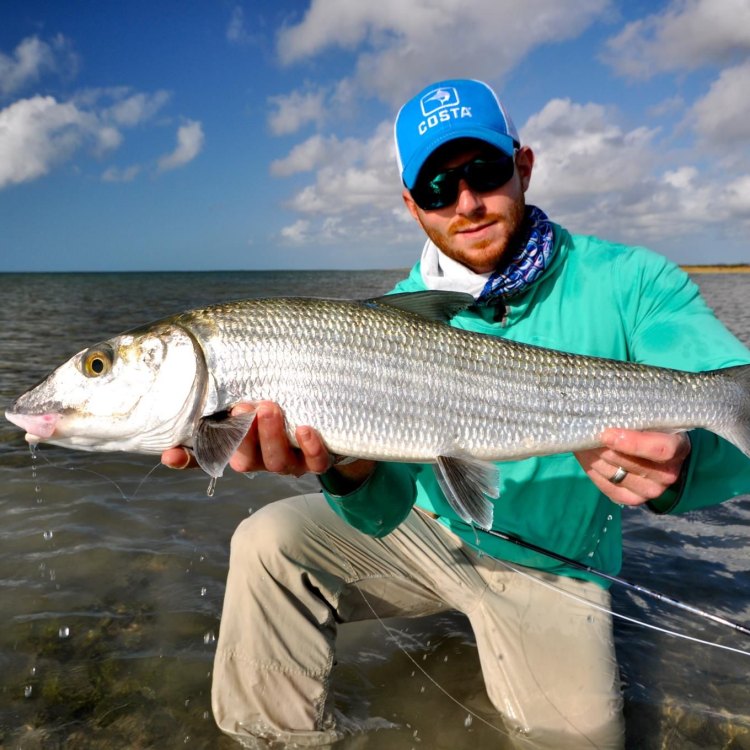
Bonefish
- Adult Size: Up to 19 pounds (8.6 kg)
- Average Lifespan: 10 to 19 years
- Reproduction: Sexual
- Reproductive Behavior: Spawning in shallow waters
- Sound or Call: No specific sound or call
- Migration Pattern: Seasonal migrations
- Social Groups: Solitary or in small groups
- Behavior: Highly skittish and wary
- Threats: Overfishing, habitat destruction, pollution
- Conservation Status: Not Evaluated (NE)
- Impact on Ecosystem: Important prey species
- Human Use: Popular sport fishing
- Distinctive Features: Large scales, deeply forked tail, long pectoral fins
- Interesting Facts: Known for their speed and strength; referred to as the 'Gray Ghost' due to their elusive nature
- Predator: Sharks, barracudas, and other large predatory fish
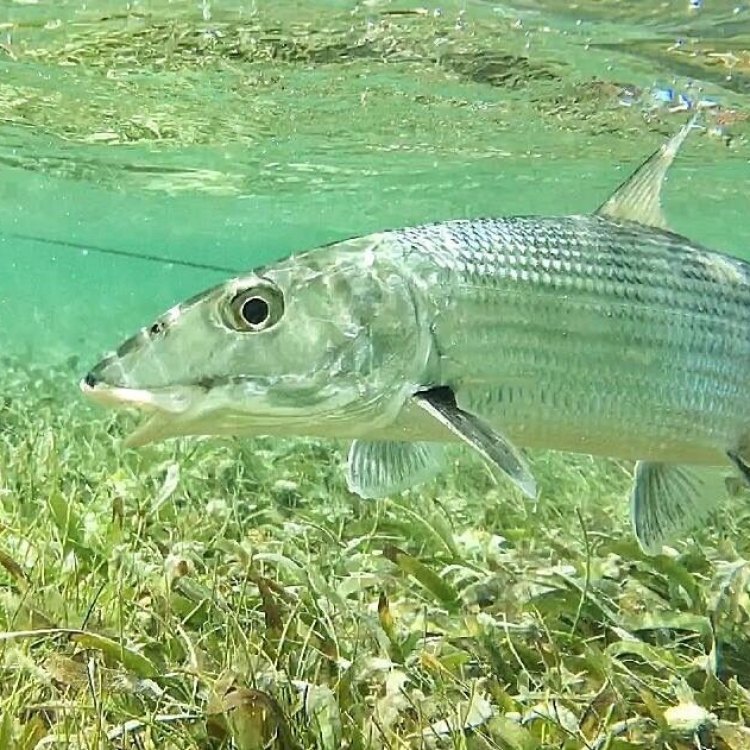
Albula vulpes
The Mysterious and Mighty Bonefish: Uncovering the Secrets of the 'Gray Ghost'
As the sun begins to rise over the horizon, the stillness of the shallow waters is suddenly disturbed by a swift and powerful fish. Its silver scales glisten in the golden light, and its deeply forked tail propels it forward with immense speed and grace. This is the bonefish, a fascinating and elusive creature known for its tremendous strength and uncanny ability to evade anglers. Despite its popularity among sport fishers, the bonefish remains relatively unknown to the general public PeaceOfAnimals.Com. In this article, we will explore the unique features of the bonefish and uncover the secrets of this mysterious species.The Basics: Adult Size, Lifespan, and Reproduction
The bonefish (Albula vulpes), also known as the silver ghost or gray ghost, is a species of saltwater fish found in tropical and subtropical waters around the world. It belongs to the family Albulidae, which includes 11 species of bonefish. The bonefish is the largest and most well-known of these species, with adults reaching up to 19 pounds (8.6 kg) in weight and measuring about 3 feet in length. However, the average size of a bonefish is around 6 pounds (2.7 kg).On average, bonefish can live for 10 to 19 years, but some have been known to survive for over 30 years in captivity. As for reproduction, bonefish are sexual, meaning they require both male and female to reproduce Binturong. They reach sexual maturity at around 3 to 4 years of age, and their spawning season runs from October to April, depending on their location. During this time, bonefish migrate to shallower waters to lay their eggs.
Spawning in Shallow Waters and Seasonal Migrations
Unlike many other fish species that spawn in deeper waters, bonefish prefer to lay their eggs in shallow waters within the tropical and subtropical regions they inhabit. This behavior is likely due to the fact that their larvae rely on the nutrient-rich food sources found in these shallow waters for survival. However, this also makes bonefish more vulnerable to a variety of threats, including overfishing and habitat destruction.Bonefish are also known for their seasonal migrations, where they move between different habitats throughout the year. These migrations can cover vast distances, spanning from shallow flats to deeper offshore waters, and can even take them across open ocean. This pattern of movement is still not fully understood, but it is believed to be driven by changes in water temperature and availability of food.
Solitary or in Small Groups, Highly Skittish Behavior
Bonefish are not a highly social species and can often be found solitary or in small groups of around 2 to 6 individuals. This behavior is likely a result of their feeding habits, as they primarily search for food alone. However, there have been sightings of bonefish swimming in large schools in certain areas, indicating that they may occasionally gather in larger groups.Unlike other fish that tend to be curious and unafraid of humans, bonefish are highly skittish and wary. They have excellent eyesight and can sense even the slightest movement or disturbance in the water. This makes them challenging to catch and adds to their elusive nature, earning them the nickname 'Gray Ghost.'
The Threats Facing Bonefish and Their Impact on the Ecosystem
Despite their impressive speed and agility, bonefish face a number of threats that have led to a decline in their population. Overfishing, driven by the high demand for bonefish as a game fish, is a major concern for their conservation. The decrease in their population can also be attributed to habitat destruction and pollution, which can disrupt their spawning behavior and harm their food sources.The decline of bonefish has significant impacts on the marine ecosystem. As an important prey species, bonefish play a crucial role in the food chain of their habitat. Their absence can have a domino effect on the entire ecosystem, leading to imbalances and potentially harming other marine species. Therefore, it is essential to protect the bonefish and preserve their population for the well-being of the ecosystem.
Distinctive Features: The 'Gray Ghost' of the Sea
The bonefish is easily recognizable by its unique features. It has a streamlined, silver body with large, mirror-like scales that make it appear almost transparent. Its head is small with a pointed snout, and its eyes are set high on its head, giving it a better view of its surroundings.One of the most distinctive features of the bonefish is its deeply forked tail, which is used for powerful and swift propulsion through the water. It also has long pectoral fins that help it to maintain balance and maneuver quickly. These features make the bonefish one of the fastest and most agile fish in the ocean, capable of reaching speeds of up to 40 mph (64 km/h).
Interesting Facts: Speed, Strength, and Predators
The bonefish is renowned for its speed and strength, making it a highly sought-after game fish among anglers. Its streamlined body and powerful tail allow it to make sudden bursts of speed, making it a challenging catch. In fact, the bonefish is known to be one of the strongest fighters among all fish species, making it a thrilling catch for any angler.Despite their speed and strength, bonefish are not invincible. They have several natural predators in the ocean, including sharks, barracudas, and other large predatory fish. To defend themselves, bonefish rely on their speed and agility to evade these predators. They also have a keen sense of hearing, which helps them detect potential threats.
Human Use: The Popularity of Bonefish as a Sport Fish
With its impressive speed, strength, and elusive nature, it's no wonder that the bonefish is a popular sport fish among anglers. Its challenging nature and ability to put up a fight make it a highly sought-after catch. Many recreational anglers travel to tropical destinations such as the Bahamas, Hawaii, and the Florida Keys to target bonefish and test their skills.However, despite its popularity, it is crucial to practice responsible fishing when targeting bonefish. This includes following catch-and-release practices, using ethical and environmentally-friendly gear, and respecting local regulations. By doing so, we can help preserve the bonefish population and ensure its survival for future generations.
In Conclusion
The bonefish is a truly unique and fascinating species, with its distinctive features and elusive behavior captivating the minds of anglers and marine enthusiasts alike. From its impressive speed and strength to its highly skittish nature, the bonefish remains a mystery in the depths of the ocean. As we continue to learn more about this elusive creature, it is essential to protect its population and preserve its role in the marine ecosystem. So next time you spot a 'Gray Ghost' gliding through the water, take a moment to appreciate the beauty and complexity of this magnificent fish.
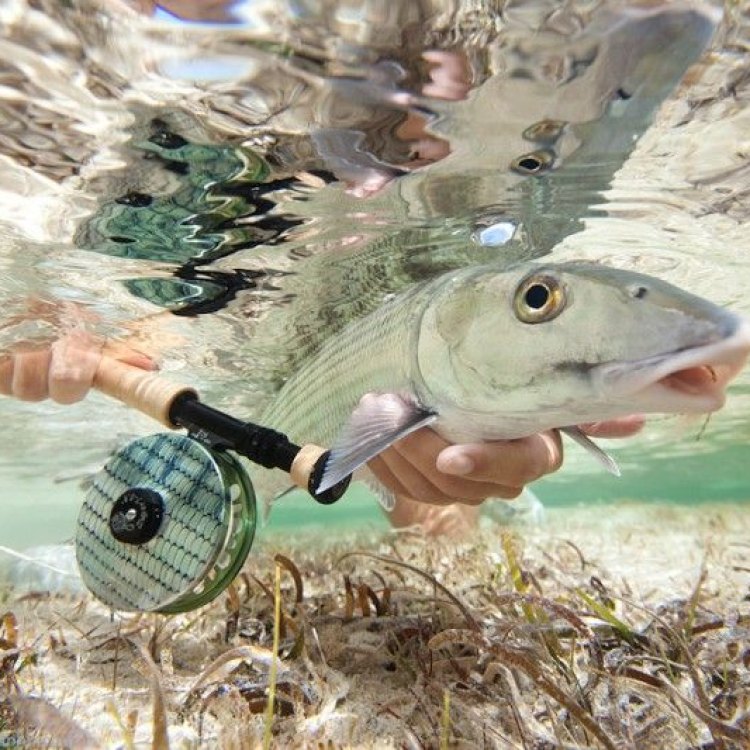
The Mysterious Bonefish: A Jewel of the Sea
Disclaimer: The content provided is for informational purposes only. We cannot guarantee the accuracy of the information on this page 100%. All information provided here may change without prior notice.






